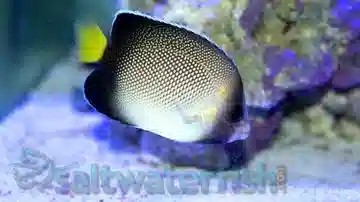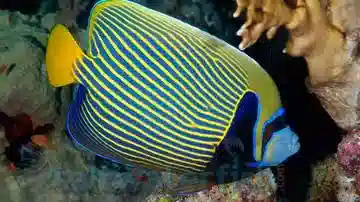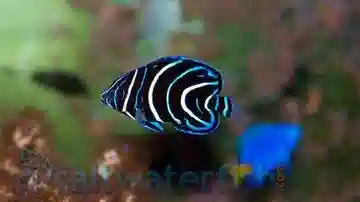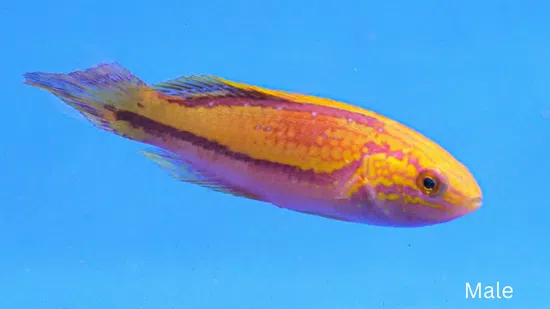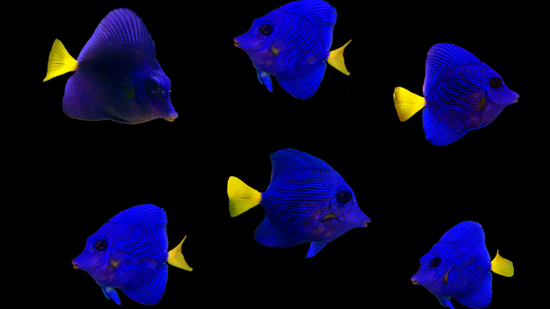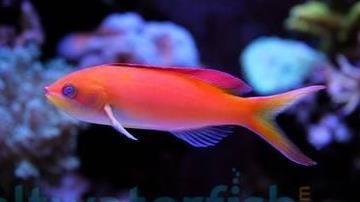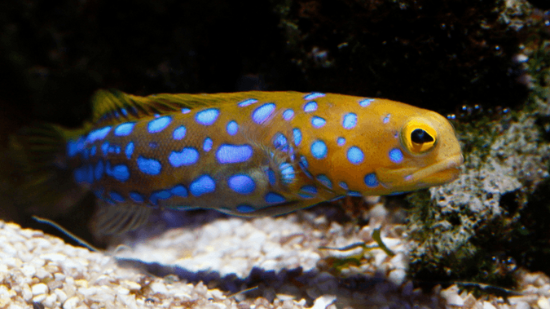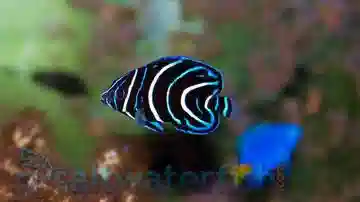Koran Angelfish: Juvenile - South Asia
Pomacanthus semicirculatus
(0 Reviews)
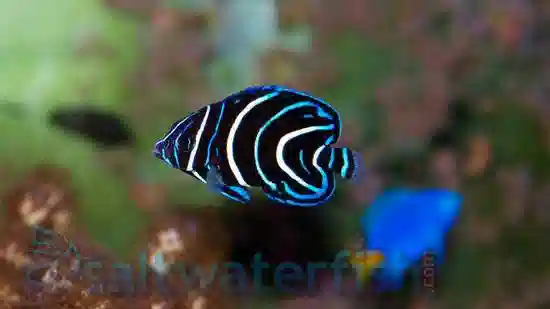

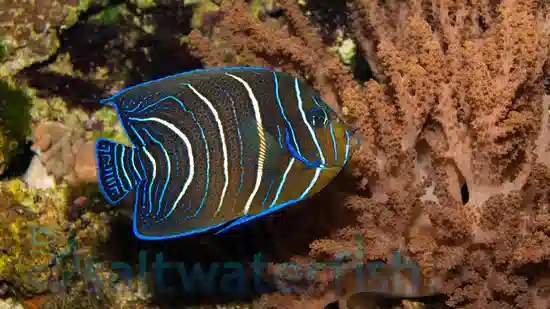
Koran Angelfish: Juvenile - South Asia
Pomacanthus semicirculatus
(0 Reviews)
{{ item.name }}
Size: {{ item.extra_field_3 }}
${{ getFormattedPrice(item.saleprice) }} ${{ getFormattedPrice(item.price) }}
To join the waiting list, click here
Free Shipping
With
$199.00
or more in Marine Life.
More details...
Koran Angelfish: Juvenile - South Asia Care Facts
| Size: | 1.5-2.5 inches |
|---|---|
| Care Level: | Moderate |
| Temperment: | Semi-Aggressive |
| Diet: | Omnivore |
| Origin: | Indo-Pacific |
| Acclimation Time: | 3+ hours |
| Reef Safe: | Monitor |
| Coral Safe: | Monitor |
| Invertebrate Safe: | Monitor |
| Minimum Tank Size: | 100+ Gallons |
Keeping the Koran Angelfish (Pomacanthus semicirculatus) in Your Saltwater Aquarium
The Koran Angelfish, scientifically known as Pomacanthus semicirculatus, is a striking marine species often coveted by seasoned saltwater aquarium enthusiasts. This comprehensive guide provides essential information for those considering the Koran Angelfish as a resident of their aquarium. We will delve into various aspects, including habitat, reef compatibility, size, lifespan, dietary needs in captivity, aquaculture availability, compatibility with other marine species, sexual dimorphism, coloration changes from juvenile to adult, temperament, precise tank requirements, and water conditions. We'll also explore common names for this species and practical reasons to consider purchasing the Koran Angelfish from Saltwaterfish.com.
Habitat and Natural Range of the Koran Angelfish
The Koran Angelfish is indigenous to the tropical waters of the Indo-Pacific region, where it inhabits coral-rich areas, lagoons, and reef slopes. This species seeks shelter among crevices and caves within coral formations in its natural habitat. To ensure the well-being of your Koran Angelfish in captivity, it's crucial to replicate these conditions within the aquarium.
Reef Compatibility of the Koran Angelfish
The Koran Angelfish is not considered reef-safe due to its propensity to nip at soft and stony corals. This behavior can potentially damage the coral ecosystem within your reef aquarium. Therefore, careful consideration should be given when introducing this angelfish to a reef environment, and close monitoring is advised.
Size and Lifespan of the Koran Angelfish
This angelfish species is classified as a large angelfish species and can attain a size of up to 15 inches (40 centimeters) in length. When properly cared for, these fish can have a lifespan of 10 to 15 years or more in captivity, making them a rewarding, long-term addition to your aquarium.
Diet in Captivity for the Koran Angelfish
Feeding the Koran Angelfish in captivity can be challenging, as they have a varied diet in the wild. To meet their nutritional needs, consider the following:
- High-Quality Marine Pellets: Integrate high-quality marine pellets into their daily feeding regimen to ensure they receive essential nutrients.
- Frozen Foods: Supplement their diet with frozen offerings such as brine shrimp, mysis shrimp, and enriched frozen preparations.
- Live or Fresh Marine Algae: Provide live or fresh marine algae to cater to their natural herbivorous tendencies. Seaweed sheets or clips are suitable options.
- Sponges and Tunicates: In their natural habitat, sponges and tunicates are a substantial part of their diet. In captivity, provide sponge-based foods to help meet this dietary requirement.
Aquaculture and Availability of the Koran Angelfish
The Koran Angelfish is not commonly available through aquaculture efforts, and most specimens in the aquarium trade are wild-caught. When sourcing these fish, choosing reputable suppliers like Saltwaterfish.com is essential to ensure the health and well-being of your new addition.
Compatibility with Other Fish and Invertebrates
Koran Angelfish can exhibit territorial and aggressive behavior towards other angelfish species. Therefore, housing them individually is generally advisable. Here are five compatible tankmates to consider:
- Tangs and Surgeonfish (Acanthuridae): Tangs, with their different body shapes and feeding habits, can often coexist peacefully with Koran Angelfish.
- Butterflyfish (Chaetodontidae): Many butterflyfish species can share a tank with the Koran Angelfish, provided there is sufficient swimming space.
- Wrasse (Labridae): Wrasse species come in various shapes and sizes, and careful selection can result in compatibility.
- Triggerfish (Balistidae): Some triggerfish species can share a tank with the Koran Angelfish, provided there is enough space and hiding spots.
- Damsel Fish (Pomacentridae): While some damselfish species can be compatible, their temperament may vary, so careful observation is necessary.
Sexual Dimorphism in the Koran Angelfish
The Koran Angelfish does not exhibit significant sexual dimorphism, making it challenging to distinguish between males and females visually.
Juvenile to Adult Coloration Changes in the Koran Angelfish
Juvenile Koran Angelfish possesses striking, vibrant coloration. They typically feature a bright blue body adorned with vivid yellow vertical stripes. As they mature into adults, their coloration undergoes a remarkable transformation. Adult Koran Angelfish display a distinctive appearance with a vivid blue-black body covered in concentric white and blue rings extending from their eye to their caudal fin. They also have a prominent yellow mask over their eyes.
Tank Requirements for the Koran Angelfish
To provide the best environment for your Koran Angelfish, adhere to these tank requirements:
- Minimum Aquarium Size: A tank with a capacity of at least 120 gallons (480 liters) is recommended for a single Koran Angelfish. Larger tanks are preferable to provide ample swimming space and territories.
- Decor and Hiding Places: Incorporate live rock structures, caves, and overhangs to mimic their natural habitat and provide hiding spots.
- Water Conditions: Maintain stable water conditions with the following parameters:
- pH: 8.1 to 8.4
- Salinity: 1.020 to 1.025
- Water Temperature: 74 to 82°F (23 to 28°C)
- Water Flow: Moderate to strong flow to mimic their natural reef habitat.
List of Common Names for the Koran Angelfish
Various common names, including the Semicircle Angelfish and the Koran Angel, are associated with the Koran Angelfish.
Why People Should Buy the Koran Angelfish from Saltwaterfish.com
Choosing Saltwaterfish.com as your source for the Koran Angelfish comes with several advantages:
- Quality Assurance: Saltwaterfish.com is committed to providing top-quality marine life. Each Koran Angelfish is carefully selected and cared for to ensure its well-being.
- Expert Guidance: Saltwaterfish.com offers valuable resources and expert advice to help create and maintain an ideal aquarium environment for your Koran Angelfish.
- Convenience: With an easy-to-navigate online platform, Saltwaterfish.com offers a secure and convenient way to purchase marine fish and essential aquarium supplies.
- Sustainability: Choosing Saltwaterfish.com supports responsible sourcing practices, contributing to marine conservation efforts and preserving marine ecosystems.
In conclusion, the Koran Angelfish (Pomacanthus semicirculatus) is a captivating addition to any saltwater aquarium. While their care can be challenging, the rewards of having this majestic fish in your tank are substantial. Ensure their health and well-being by sourcing your Koran Angelfish from reputable suppliers like Saltwaterfish.com.
Love this beautiful fish. It is quite active and not too shy. This is one of my kids' favorite.
Reviewed by: Allyson on March 12, 2017
Beautiful Fish gets alone with my lavender tang, clownfish, blenny, firefish.
Reviewed by: Susan on Aug. 1, 2016
Very big and colorful, and very lively when arrived
Reviewed by: Nikki Temple on March 26, 2016


